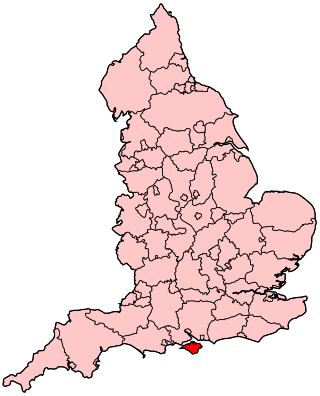In the United Kingdom, the boundary commissions are non-departmental public bodies responsible for determining the boundaries of parliamentary constituencies for elections to the House of Commons. There are four boundary commissions: one each for England, Scotland, Wales and Northern Ireland.

Isle of Wight was a constituency that was last represented in the House of Commons of the UK Parliament from 2017 until 2024 by Bob Seely, a Conservative.

Cities of London and Westminster is a constituency returning a single Member of Parliament (MP) to the House of Commons in the United Kingdom Parliament. As with all constituencies, the election is decided using the first past the post system of election. Until the 2024 general election, where the constituency elected a Labour Co-op MP, the constituency had always elected the candidate nominated by the Conservative Party.

As a result of the Fifth Periodical Review of the Boundary Commission for Scotland, Scotland was covered by 59 constituencies of the House of Commons of the United Kingdom Parliament: 19 burgh constituencies and 40 county constituencies. These constituencies were used from the 2005 to the 2019 general elections, and were replaced by new constituencies at the 2024 election.

Scottish Westminster constituencies were Scottish constituencies of the House of Commons of the Parliament of Great Britain, normally at the Palace of Westminster, from 1708 to 1801, and have been constituencies of the House of Commons of the Parliament of the United Kingdom, also at Westminster, since 1801. Constituency boundaries have changed on various occasions, and are now subject to both periodical and ad hoc reviews of the Boundary Commission for Scotland.
The fifth periodic review of Westminster constituencies was undertaken between 2000 and 2007 by the four boundary commissions for England, Scotland, Wales and Northern Ireland for the UK Parliament. The changes for England, Wales and Northern Ireland took effect at the 2010 general election; that for Scotland took effect at the 2005 election. All of the recommendations were approved.

The Parliamentary Constituencies Act 1986 is an Act of the Parliament of the United Kingdom. It is the current legislation defining the constitution and work of the four parliamentary Boundary Commissions in the UK. A copy of the current text of the legislation, incorporating all current amendments, is available from the legislation section of the Boundary Commission for Scotland website.

The Parliamentary Voting System and Constituencies Act 2011(c. 1) is an Act of the Parliament of the United Kingdom that made provision for the holding of a referendum on whether to introduce the Alternative Vote system in all future general elections to the UK Parliament and also made provision on the number and size of parliamentary constituencies. The Bill for the Act was introduced to the House of Commons on 22 July 2010 and passed third reading on 2 November by 321 votes to 264. The House of Lords passed the Bill, with amendments, on 14 February 2011, and after some compromises between the two Houses on amendments, it received Royal Assent on 16 February 2011.
The 2013 periodic review of Westminster constituencies, also known as the sixth review, was an ultimately unfruitful cycle of the process by which constituencies of the House of Commons of the United Kingdom are reviewed and redistributed. The four UK boundary commissions carried out their reviews between 2011 and 2013, but their recommendations were not taken up by the government and instead the 2018 periodic review of Westminster constituencies was carried out from 2016 to 2018. That review was also not implemented and its results were formally laid aside in 2020.
The 2023 periodic review of Westminster constituencies was the most recent cycle of the process to redraw the constituency map for the House of Commons of the United Kingdom. The new constituency boundaries were approved by the Privy Council on 15 November 2023 and came into law on 29 November. It is the first review of Westminster boundaries to be successfully implemented since 2010.
The 2018 periodic review of Westminster constituencies was an ultimately unfruitful cycle of the process by which constituencies of the House of Commons of the United Kingdom are reviewed and redistributed. The four UK boundary commissions carried out their reviews between 2016 and 2018, but their recommendations were not taken up by the government and were formally laid aside in 2020.
This article covers the timeline of the most recent cycle of the process to redraw the constituency map for the House of Commons, namely the 2023 Periodic Review of Westminster constituencies. The new constituency borders came into law on 29 November 2023. For a summary of the outcome of the review, see 2023 periodic review of Westminster constituencies.





